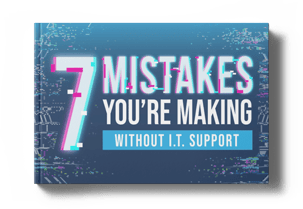What Modern CFOs Need to Know to Be Successful
The role of CFO has changed dramatically over the past few years. From a focus on financial matters to leading technology initiatives, CFOs need...
2 min read
Lance Stone : Jun 29, 2020 7:02:04 PM
The COVID-19 epidemic has caused just about every aspect of business life to change. There is almost no industry that hasn't had to adapt to change as a result of this pandemic. Now is the time to shift your business into the digital age by making several strategic changes that can help future-proof your organization regardless of what obstacles the future may hold.

The long-term ramifications that COVID-19 has placed on industries across the globe are yet to be fully understood. Companies are quickly adapting and developing new product lines for the new way of living, and many workforces have gone fully remote—with more questions than answers regarding when or if a return to a traditional office place is going to be recommended or necessary. While these changes are certain obstacles that need to be addressed at the corporate level, they also pose opportunities for companies to revolutionize themselves from the inside out and provide themselves adaptable and resilient in the face of a global crisis.
Becoming digitally adaptable is more important than ever, and is the most important way that any organization can begin to future-proof themselves in the face of so much uncertainty.
Here are three strategies that can help future-proof your organization:
Strategy 1: Embrace flexibility over rigidity
A largely digital workforce means that most members of the workforce will not have entirely designated workspaces that will allow for uninterrupted hours of productivity. This type of workforce is often referred to as highly distributed and potentially inconsistent (HDPI). This means that workers are everywhere, and external factors can’t necessarily be controlled to limit interruption.
Using the same quotas and expectations regarding the timeliness of a returned product may not work as effectively on a digital platform. There is going to be ebb and flow in how much workers will get done based on task and availability, and this is okay. Expecting these adjustments and preparing for them effectively by communicating with your workers is the most helpful path forward.
Strategy 2: Limit roadblocks where possible
With workers being highly distributed and working hours being more flexible, it is common for a business to experience chokeholds or roadblocks in productivity as one worker awaits for another to be available to complete a minor task before anything can move forward. From a managerial standpoint this is frustrating, but can be easily avoided by re-working how tasks are managed and assigned.
Take the time to evaluate the flow of work from the traditional office space, and to see how those tasks can be managed individually when broken into smaller chunks. Then, create a way for people to easily be able to add their contributions in real-time without having to wait on another component to begin. This will allow more versatile employees a chance to shine as they are able to fill in gaps and help piece work together that may have remained isolated previously. This ultimately will create a more productive and effective workforce.
Strategy 3: Manage time more effectively by managing it less often
As worker availability and productivity may ebb and flow, it makes more sense for the corporation to be adaptable and allow workers to contribute in the most effective ways for their household needs rather than expect total rigidity to a traditional office-structured schedule. For many, working from home means caring for children or aging parents alongside managing a workload, and could mean that work happens on and off throughout the day and into the night rather than just through traditional hours.
Rather than expecting all workers to maintain traditional availability, consider having designated check-in times for workers to communicate with one another, like a traditional meeting, and then allow the workforce to meet deadlines and complete tasks at the hours that work for them. A bit of flexibility in time management can drastically improve employee morale and productivity.

The role of CFO has changed dramatically over the past few years. From a focus on financial matters to leading technology initiatives, CFOs need...

EBay’s parent company E-commerce, is asking all their users to change their passwords after a cyber attack compromised their database. So far they...
Covid-19 Has Permanently Changed Cybersecurity - You Need to Hire an IT Managed Service In Response About 70% of business executives admit that they...

On Time Tech is an IT Support and Computer Services company serving California. We provide services to the areas in and around We know businesses like yours need technology support in order to run highly-effective organizations. Leverage pro-growth technology services for your company now.
San Francisco:
182 Howard St.
Suite 108
San Francisco, CA 94105
Los Angeles:
8350 Rex Road
Pico Rivera, CA 90660
Business Hours:
M-F: 8AM-9PM
© 2024 On Time Tech